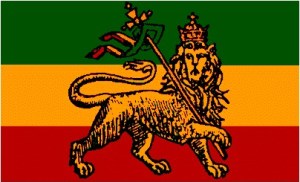I’ve called Pensacola home for the majority of my life. I’ve lived plenty of other places, but my roots run deep in Northwest Florida. Casually strolling down Palafox Street, I’m often amazed at just how much history is packed into such a small space. Along with art galleries, music venues, and bars that specialize in craft-beer, are mixed the small Plaza Ferdinand VII and at the end of the road the circular Plaza de Luna situated on the front of Pensacola Bay where you are confronted by a bronze statue of the conquistador Tristan de Luna. Downtown Pensacola contains several little archaeological sites and reminders of its colonial past.

Pensacola at a Glance
The City of Pensacola is a quirky, moderately sized metropolitan area in Escambia County on the Northwest Gulf Coast of Florida, situated on the bay which shares its name. It’s also known as the City of Five Flags, because the flags of five separate nations have flown over it; Spain, France, England, the United States, and the Confederate States of America.
Pensacola has a bit of an identity crisis, part beach town, college town, military town, and a large part traditional southern community. It’s large enough that there is always an abundance of new people to meet, but small enough that there is a good chance they already know someone you do. If you are active enough moving around the town you will almost certainly run into friends and acquaintances on any given day.
To tourists, Pensacola is known for its snow-white sandy beaches and the emerald green waters which surround them. The summers are warm and sunny. Late summer is brutally hot and muggy, but the winters are mild. And there are plenty of trees.
A Brief History of Pensacola
Although Pensacola is often treated as Florida’s secret, it bears a significant place within American history. The indigenous inhabitants of the Northwest Florida territory were participants in the Southeastern Ceremonial Complex; part of the Mississippian mound building cultures. The earliest records of this land were made by 16th century Spanish explorers. Tristan de Luna landed here in 1559, establishing a short-lived Spanish colony, making Pensacola the first European settlement in what is today’s continental United States. De Luna established a port where Naval Air Station Pensacola is located today. A few months later the colony was devastated by a hurricane and abandoned.
Pensacola means “Hair People” or “Hair Clan” in the Native language, closely related to Choctaw, in the Muskogean family. We know the Pensacola tribe occupied the area by 1677 AD, and in 1686 they were at war with the Mobile Indians to the west. In 1698 the Spanish established another colony here, making Pensacola an important port town and the primary exporter of hides during the deer skin trade. Since those days, Pensacola has been a regular settling place for Eastern Creek Indians. It was traded back and forth between the Spanish, English and, French until finally being acquired by the United States in 1821.
Lifestyle
Today, Pensacola is the home of the Center for Naval Aviation and the Center for Naval Cryptology. This is also the home base for the Blue Angels flight squadron.
The local University of West Florida has graduated over 67,000 students and is well respected for having one of the best southeastern archaeology departments with full-time terrestrial and maritime projects at work every summer.
For a cool place to hang out I recommend McGuire’s Irish Pub. Seville Quarter is also very popular among the younger, pop-culture driven crowd. For large popular musical acts there is the Civic Center, while Vinyl Music Hall provides a more intimate venue.
If your interests lie in an independent music scene, Pensacola has that too. Two clubs stand out the most in this area; The Handlebar, and Sluggo’s. These two venues have been a part of the Pensacola alternative music scene for so long that any discussion of Pensacola nightlife without mentioning them would be incomplete and uninformed.
Outdoor Activities
Ecotourism is an abundant resource in the Pensacola area. To begin with there is of course Pensacola Beach, a barrier island of some of the whitest and most beautiful beaches you’ve ever seen. For camping, the island provides spaces near the Civil War era Fort Pickens which also served as a prison for Geronimo and his band of Chiricahua Apaches. Back on the main land Big Lagoon State Park provides camping spaces with plenty of access to water. My personal favorite area for outdoors excursions is the Blackwater River State Park in nearby Santa Rosa County, with endless trails of undisturbed natural flora and fauna.

Local Celebrities
Pensacola has also produced its share of celebrities including WBA Heavyweight Champion Roy Jones Jr., NFL running back Emmitt Smith, multiple platinum winning producer Larry Butler, and Native American Music Award winning rapper Shadowyze. Former presidential candidate, Senator John McCain attended flight school at NAS Pensacola.
Pensacola inspires artists of various sorts and every craft. It has a diverse culture, more cosmopolitan than most of the surrounding area. It holds a significant place in American history as the first European colonial city in what would become the United States. With multiple festivals and cultural expositions celebrated throughout the year, Pensacola is one of Florida’s hidden treasures.
Like this:
Like Loading...



